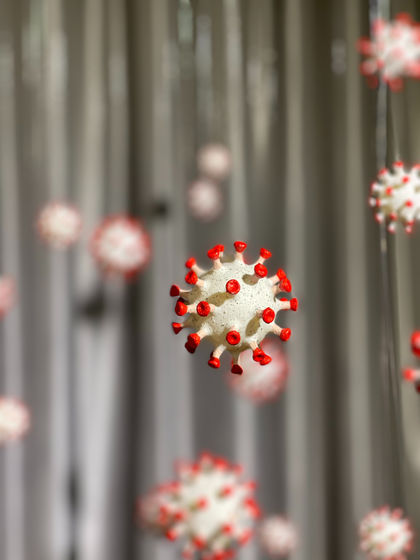Research results will be announced that the new corona will proliferate in brain tissue after infection and remain in the body for up to 230 days

A paper investigating the
SARS-CoV-2 infection and persistence in the human body and brain at autopsy | Nature
https://www.nature.com/articles/s41586-022-05542-y
Study shows SARS-CoV-2 infection, replication and persistence in human brain tissues
https://www.news-medical.net/news/20221216/Study-shows-SARS-CoV-2-infection-replication-and-persistence-in-human-brain-tissues.aspx
New coronavirus infection (COVID-19) has been reported to cause multiple organ damage in the acute phase, and some infected people suffer from long-term sequelae called 'PASC'. Although there are multiple studies on this, there is no detailed investigation of its impact on non-respiratory diseases and how long SARS-CoV-2 persists in non-respiratory tissues such as the brain. did.
A paper published this time in Nature describes how SARS-CoV-2 is distributed in non-respiratory tissues such as the brain during the acute phase of COVID-19 until seven months after the onset of symptoms.・We are quantifying whether proliferation and cell tropism occur.
Between April 26, 2020 and March 2, 2021, the research team collected autopsy brain specimens from 44 unvaccinated patients who died of COVID-19 infection, and 11 Analyze min central nervous system sampling. When the research team conducted a PCR test, it seems that 38 of the samples analyzed were positive.

The study performed a
In addition, ribonucleic acid (RNA) was detected by performing real-time quantitative reverse transcription PCR analysis. We have performed virus isolation experiments using VeroE6 cells to demonstrate the presence of SARS-CoV-2 capable of replication among respiratory tissues. Furthermore, the diversity and distribution of variants in the SARS-CoV-2 spike protein was determined by HT-SGS (high-throughput single genome amplification and sequencing) analysis of six individual samples. is.
Autopsy specimens are classified into three groups based on the number of days infected with COVID-19 at the time of death: ``within 14 days'', ``15 days or more and less than 30 days'', and ``31 days or more''. In addition, image analysis of the interventricular septal tissue from 16 of the subjects was performed, and the SARS-CoV-2 N protein RNA detected by ddPCR test and the SARS-CoV-2 spike protein detected by ISH analysis were analyzed. Assessing RNA relevance.

Thirty percent of the study participants were female, the median age of the subjects was 63 years, and 61% of them suffered from at least three comorbidities. The median time from onset to hospitalization was 6 days, and the median time from onset to death was 19 days.
SARS-CoV-2 RNA was found to be present in 84 anatomical sites, but significantly more in respiratory tissue than in other tissues. Although SARS-CoV-2 RNA has been identified in all early, intermediate, and late cases, SARS-CoV-2 RNA was detectable in autopsy serum only in early cases. 11 cases, only 1 case in the middle stage.
Persistent presence of SARS-CoV-2 RNA in body tissues in late-stage cases, despite undetectable SARS-CoV-2 RNA in autopsy sera from late-stage cases has been confirmed. SARS-CoV-2 RNA has been identified in brain tissue in five of the six late-stage cases. SARS-CoV-2 RNA has been detected in body tissues and body fluids, including serum, vitreous humor, and pleural effusion. SARS-CoV-2 was also detected in 45% of lymph node, heart, adrenal, gastrointestinal, and ocular tissue specimens from early-stage cases.

Histopathological analysis showed that 92% of cases died from diffuse alveolar injury or acute pneumonia. Myocardial infiltration, paracortical and follicular hyperplasia were also observed. However, despite the widespread distribution of SARS-CoV-2 RNAs in the body, only minimal cytopathological effects and inflammation caused directly by them have been observed in non-respiratory tissues. Not.
The research team said that SARS-CoV-2 spreads to non-respiratory tissues such as the brain in the early stages of infection, repeats replication, and may remain in the body for several months (up to about 230 days) after the onset of symptoms. is.
Related Posts:
in Science, Posted by logu_ii







